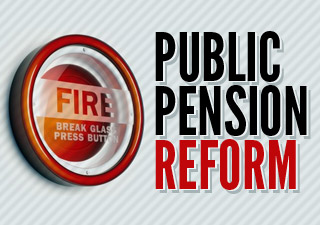Media

Senate Introduces Substantive Pension Reform
Now, more than ever, transformative reform in needed to address Pennsylvania’s undeniable pension crisis. Last week, the state Senate began this process by introducing pension reform bill SB 1.
With an official unfunded liability of $63 billion and growing between Pennsylvania’s Public School Employees’ Retirement System (PSERS) and the State Employees’ Retirement System (SERS), pension obligations present the biggest challenge to our state budget and state economy. Not only are pension costs crowding out other state programs, pensions are the number one driver of school property taxes and of teacher layoffs.
Last Fall, the state House fell three votes short of passing a similar compromise pension reform bill. Unfortunately, the problem has only gotten worse since then.
After announcing investment returns fell short of expectations again 2016, SERS recently reduced their forecasted investment return from 7.5 percent to 7.25 percent. As reported by Capitolwire, this assumption adjustment instantly added another $1 billion to SERS’ current unfunded liability, which stands at approximately $19.5 billion.
SB 1 would pivot away from the risky defined benefit system, offering a side-by-side hybrid option that pairs a 401(k)-component with a smaller defined benefit component. Additionally, SB 1 provides new and current employees with the option of a 401(k)-style plan.
According to Pew Charitable Trust, the hybrid pension proposal “would mitigate more risk than any state that has enacted pension reform while maintaining or improving retirement security for workers.” It’s time Pennsylvania changes course by enacting meaningful pension reform.
Across Pennsylvania, 54 percent of voters support a 401(k)-style plan for state workers. And for good reason: Defined contribution plans provide employees greater retirement choice, portability, and security. Further, it protects taxpayers from shouldering the cost of the mounting debt.
The longer Pennsylvania waits to enact reform, the greater the taxpayer-funded debt and the longer employees are trapped in restrictive retirement plans.